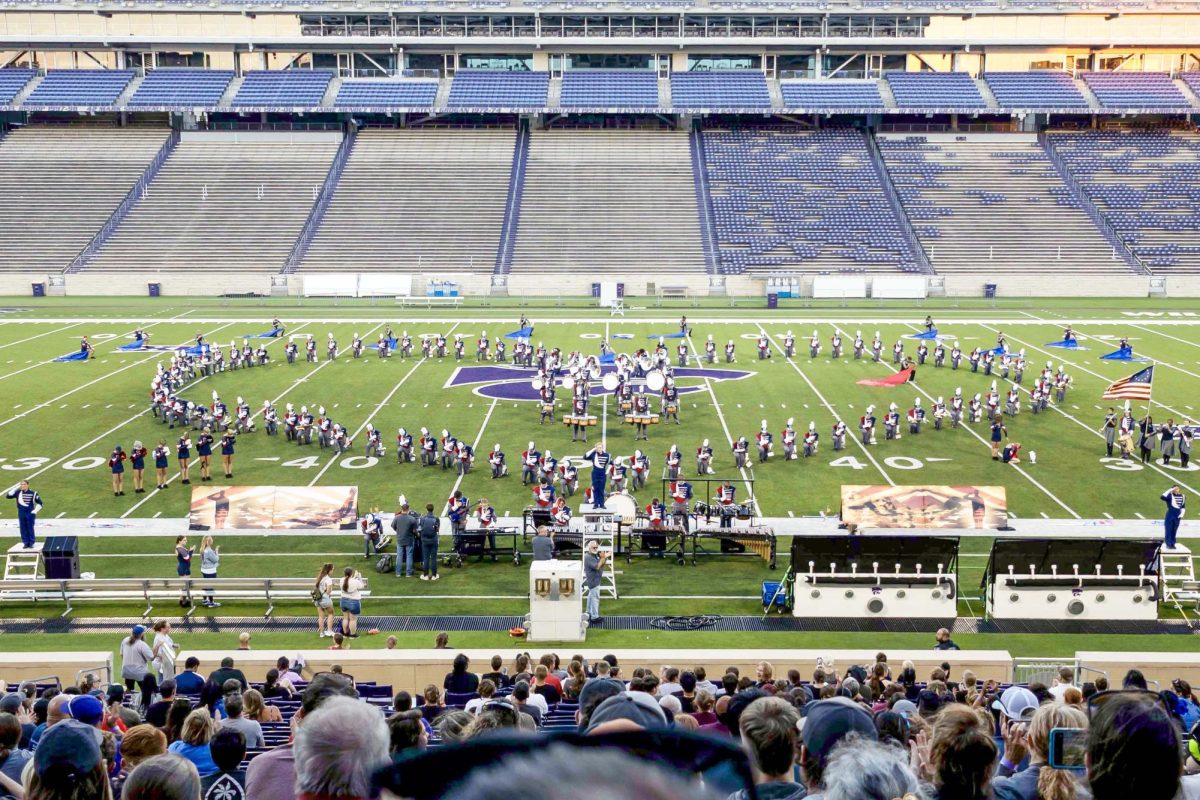Manhattan High School hosted active shooter drills on July 10,11 and 12.
Over the course of the three days, Riley County Police Department (RCPD), Manhattan Fire Department (MFD) and the Riley County Emergency Medical Services (EMS) practiced their safety response in the situation of an armed individual causing harm in the High School.
Volunteers from MHS acted as victims of the active shooting drill, many having fake wounds and blood on them to make the situation more accurate to a real emergency.
“I think it is a good thing to help out officers, EMTs and firefighters to train in these kinds of scenarios,” volunteer Griffin Gergeni said.
Upon arrival into the high school, volunteers were checked for the possible possession of real weapons to further ensure a safe environment to accurately do the drills. Each day, there were four drills, two of which taking place in Rezac Auditorium, and the other two were in the Sunset Commons and the surrounding classrooms. Law enforcement overseeing the drills would instruct volunteers on what to do and how to act. Volunteers were instructed to scream and in addition to that noise, loud music was played when drills took place in the auditorium.
“If you have people screaming and maybe some music going on, it makes it a lot harder to communicate,” said Andrew Moeller, the support services captain for the K-State Police Department.
When given the signal to begin, the “bad guy” would shoot his unloaded gun, which sounded similar to that of a real gun but doesn’t actually have bullets that come out. Just like in a real situation, police officers were the first to report to the scene of the shooting where they would disarm and contain the shooter and search for any other dangers in the vicinity. The next to report were firefighters and medics who immediately tended to the “wounded” and in some cases “deceased” bystanders on the scene.
“We respond together in a variety of situations every day,” assistant director of the EMS ambulance Josh Gering said. “All of these kinds of goals get conglomerated into one core mission.”
This “conglomeration” at its core is due to the strong communication between all responders that is absolutely vital to the quickness and effectiveness of dealing with these types of emergencies.
“We do try and get the blood pumping, get that adrenaline dump, and get them to realize that despite all the physiological things going on they can still focus and do their job,” Moeller said.
Once the drills are wrapped up RCPD, MFD, EMS and the USD 383 safety team discuss the events of the drills, in order to be best prepared for a real situation.
Michele Jones, communications and safety director for USD 383, has coordinated the drill for 10 years. She believes the interest in helping with the drill has increased among MHS students.
“This summer by far has been the most students that have participated,” Jones said.
The drills are always informative, even for people who have participated in previous years.
“We always learned a lot during these drills, we always come away with many more questions and things to think through and talk through,” Jones said.
Quotes
Griffin Gergeni, Volunteer going into senior year
“I think it is a good thing to help out officers, EMTs and firefighters to train in these kind of scenarios because there is not many chances to train for these kind of scenarios”.
Michele Jones, director of communications and safety at MHS
“Between Usd 383, RCPD and Manhattan Fire we are the ones who started this annual event about ten years ago.”
“When we began we were just all looking for a way to get all of the emergency responders together in a spot so that they could practice the whole response tactic.”
“When Sandy Hook happened, the part of it was the location of Sandy Hook, the way the school was built there was one way in and one way out, so that was a change.”
“Theres all these different pieces that are happening”
“We always learned a lot during these drills, we always come away with many more questions, things to think through and talk through”.
“This summer by far has been the most students that have participated”.
Andrew Moeller, support services captain with K-State PD
“If something were to happen in the city of Manhattan, Riley County would probably be there first, but our officers would probably be there before the rest of the RCPD officers would be there. So, it’s important to work in conjunction with eachother”.
“It’s always good to come together and to train together.”
“We to try to create a real feeling environment so that the officers know that they can operate in a real situation, so we do try and get the blood pumping, get that adreliene dump, and get them to realize that despite all the physiological things going on they can still focus and do their job.”
“If you have people screaming and maybe some music going on, it makes it a lot harder to communicate.”
Josh Gering, Assistant director, EMS ambulance.
“We respond together on car wrecks, we respond together on medicals, we respond together on a variety of situations every day.”
“All of these kinds of goals get conglomerated into one core mission.”





